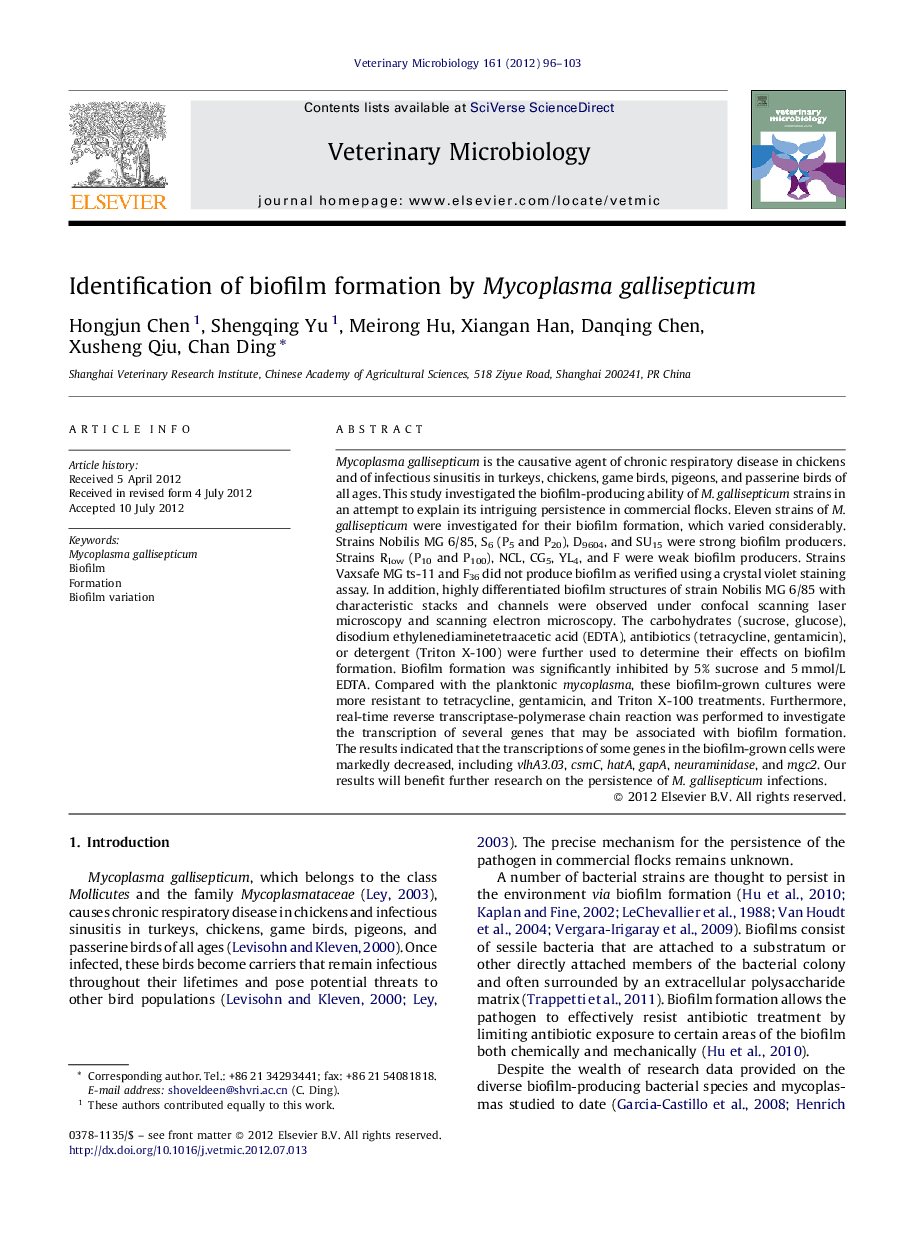| کد مقاله | کد نشریه | سال انتشار | مقاله انگلیسی | نسخه تمام متن |
|---|---|---|---|---|
| 2466984 | 1555380 | 2012 | 8 صفحه PDF | دانلود رایگان |

Mycoplasma gallisepticum is the causative agent of chronic respiratory disease in chickens and of infectious sinusitis in turkeys, chickens, game birds, pigeons, and passerine birds of all ages. This study investigated the biofilm-producing ability of M. gallisepticum strains in an attempt to explain its intriguing persistence in commercial flocks. Eleven strains of M. gallisepticum were investigated for their biofilm formation, which varied considerably. Strains Nobilis MG 6/85, S6 (P5 and P20), D9604, and SU15 were strong biofilm producers. Strains Rlow (P10 and P100), NCL, CG5, YL4, and F were weak biofilm producers. Strains Vaxsafe MG ts-11 and F36 did not produce biofilm as verified using a crystal violet staining assay. In addition, highly differentiated biofilm structures of strain Nobilis MG 6/85 with characteristic stacks and channels were observed under confocal scanning laser microscopy and scanning electron microscopy. The carbohydrates (sucrose, glucose), disodium ethylenediaminetetraacetic acid (EDTA), antibiotics (tetracycline, gentamicin), or detergent (Triton X-100) were further used to determine their effects on biofilm formation. Biofilm formation was significantly inhibited by 5% sucrose and 5 mmol/L EDTA. Compared with the planktonic mycoplasma, these biofilm-grown cultures were more resistant to tetracycline, gentamicin, and Triton X-100 treatments. Furthermore, real-time reverse transcriptase-polymerase chain reaction was performed to investigate the transcription of several genes that may be associated with biofilm formation. The results indicated that the transcriptions of some genes in the biofilm-grown cells were markedly decreased, including vlhA3.03, csmC, hatA, gapA, neuraminidase, and mgc2. Our results will benefit further research on the persistence of M. gallisepticum infections.
Journal: Veterinary Microbiology - Volume 161, Issues 1–2, 28 December 2012, Pages 96–103